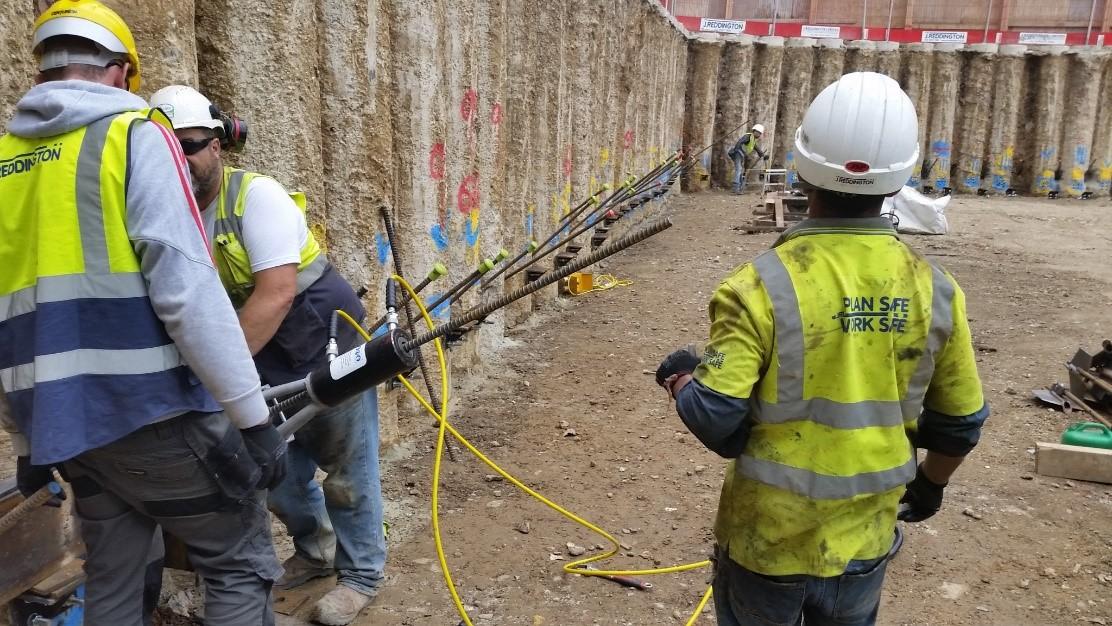Ground anchors
Ground anchors
The three most common types of ground anchor in the UK are:
- Grouted anchors
- Driven plate anchors
- Helical anchors
Ground anchors are designed in accordance with BS EN1997-1:2004 ('Eurocode 7'). For grouted anchors, additional guidance is provided in BS8081:2015 and BS EN1537:2013. Whichever type of anchor is used, Eurocode 7 requires its resistance to be determined from the results of site specific load tests. Calculations are performed to estimate the geotechnical resistance of the proposed anchor based upon the strength of the ground at the 'fixed' end of the anchor. All working anchors are load tested to confirm they can resist the specified design loads.

Slide title
LimitState GEO analysis of anchored retaining wall
Button
Slide title
LimitState GEO analysis of anchored slope
Button
Slide title
LimitState GEO local stability analysis of inclined plate anchor
Button

Slide title
Eccleshall - Vulcan ground anchors ro support steep excavation
Button
Slide title
River Stort - Vulcan ground anchors to stabilise abutment wall
ButtonSlide title
Gallions Mount School, Greenwich - Retaining wall to be stabilised with Vulcan anchors
Button
Slide title
Blandfield, Edinburgh - Retaining wall to be stabilised with Vulcan anchors
Button
Slide title
Ravenside, Chesterfield - Temporary excavation stabilised with Vulcan anchors
Button
Slide title
Vulcan anchors for steel sheet piled wall
Button
Slide title
North Wharf Gardens, London - Temporary Vulcan anchors for contiguous bored pile wall
Button
(Vulcan anchor project photographs courtesy of Anchor Systems (International) Ltd)
We have designed driven plate anchors (the Vulcan® system) for both temporary and permanent works applications. These include:
- Steep slopes for temporary excavations
- Stabilisation of existing embankment and cutting slopes
- Stabilisation of existing retaining walls
- Propped embedded retaining walls (sheet & bored piles)
The scope of design service offered for ground anchors is one of two levels:
1) Local stability - Assessment of the geotechnical & structural capacity of an individual anchor to resist specified design loads.
2) Global & local stability - Assessment of the overall stability to determine the design anchor loads and resistance of each individual anchor.
The software program LimitState GEO is well suited to analysing the stability of anchored slopes and retaining walls.
© 2024
All Rights Reserved - Tellus Consulting Ltd
Registered in England & Wales No.7446086
